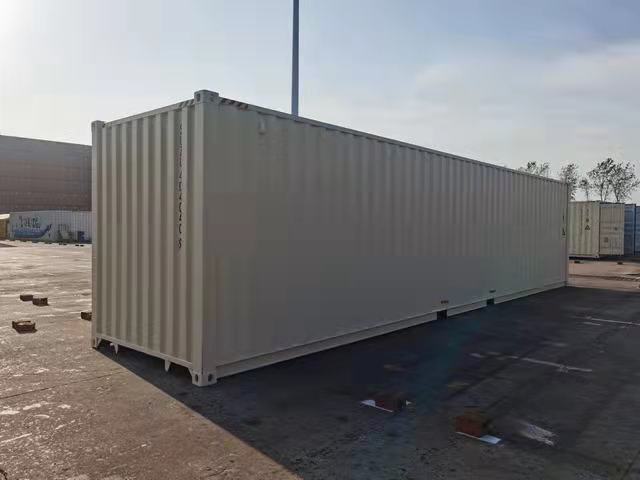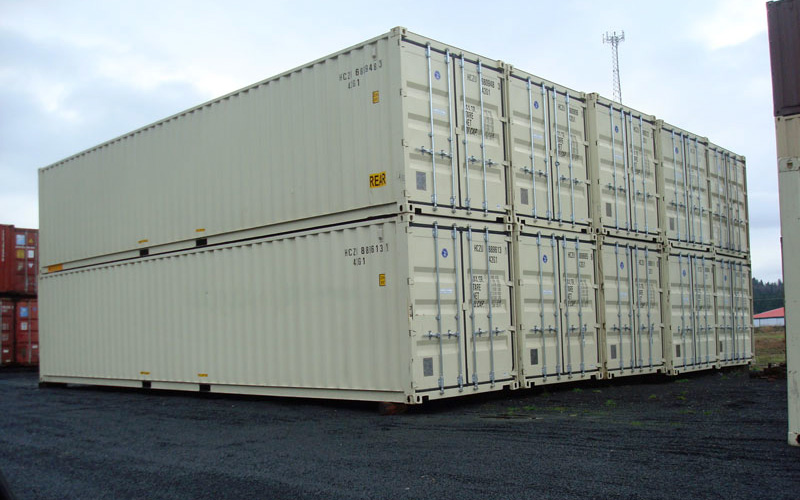The Ultimate Overview to Choosing the Right Delivery Container for Your Demands
When it pertains to selecting the appropriate shipping container, comprehending your specific needs is essential. You'll wish to take into consideration elements like size, kind, and material to ensure you make the very best choice. From conventional dimensions to specialized choices, there's a lot to check out. And also, budgeting for both the container and any type of alterations can make a big distinction. Allow's damage down the key facets to help you locate the ideal fit for your demands.
Recognizing Delivery Container Sizes
When you're picking a delivery container, recognizing the various sizes offered is essential for making the appropriate choice. Delivering containers commonly come in standard sizes of 20 and 40 feet, but you'll also discover other measurements. Recognizing the dimension you need depends on what you prepare to shop or transport.If you're moving smaller sized products, a 20-foot container may be ideal, while larger deliveries usually call for a 40-foot container. The height can additionally differ; high cube containers offer extra upright area, which can be useful for taller goods.Before making a decision, gauge your freight, and think about how much room you'll require for filling and unloading. Constantly factor in prospective future requirements-- opting for a slightly larger container may conserve you hassle down the line. Eventually, choosing the best size will certainly improve performance and assure your products are safe and secure throughout transit
Sorts Of Shipping Containers Available
There are numerous kinds of shipping containers readily available, each designed for details objectives and freight needs. The basic dry container is versatile, excellent for basic freight. If you're delivering disposable items, think about a cooled container, which keeps a controlled temperature level. For extra-large things, high cube containers use additional elevation, accommodating taller loads.If you require to move hefty equipment or equipment, flat rack containers supply a sturdy base without wall surfaces. Open-top containers allow for easy loading of tall cargo, with a detachable tarp covering for security. If you're looking for flexibility, consider a collapsible container that can be quickly kept when not in use.Lastly, specialized containers like storage tank containers are utilized for liquids, while vented containers are developed for bulk freight that requires ventilation. Knowing your cargo type will certainly help you select the right container to meet your shipping requires effectively.
Material Considerations for Resilience
When selecting a shipping container, the product plays an essential function in its longevity. You'll intend to consider the benefits of steel versus aluminum, especially concerning corrosion resistance. Understanding these elements can help you make a more educated choice for your shipping needs.
Steel vs. Light weight aluminum Containers
Exactly how do you choose in between steel and aluminum containers for your delivery requires? Beginning by considering durability. Steel containers are durable and deal exceptional strength, making them excellent for heavy loads and rough problems. They stand up to damage from effects and are typically more economical, which can be a major variable for budget-conscious buyers.On the other hand, light weight aluminum containers are lightweight, which can conserve you on shipping prices. They're easier to navigate and are an excellent selection if you need to move products regularly. Nevertheless, aluminum is usually much more pricey and less durable than steel. Evaluate your specific requirements carefully, including weight, price, and the sort of cargo you'll be delivery, to make the appropriate option for your circumstance.
Corrosion Resistance Aspects
Choosing the right product does not simply entail weight and expense; rust resistance plays a considerable role in longevity. When picking a shipping container, think about the environment it'll encounter. Steel containers, while solid, can corrosion otherwise correctly treated. Try to find alternatives with safety coatings or galvanization to enhance their life expectancy. Aluminum, on the various other hand, offers natural corrosion resistance, making it perfect for coastal locations or damp conditions. Nevertheless, it can be a lot more expensive. Additionally, analyze the container's usage-- if it'll be subjected to chemicals or severe weather, focus on products that can hold up against these problems. Purchasing a corrosion-resistant container currently can conserve you from costly repairs or substitutes down her latest blog the line. Pick wisely for long-term benefits.
Modifications and Modification Options
Delivering containers aren't just for delivering items; they can be changed to satisfy your specific requirements through different modifications and customization options. You can convert a common container into a comfortable workplace, a momentary retail store, or perhaps a personal health club. The possibilities are almost endless.Think concerning adding home windows, insulation, or ventilation to enhance comfort. You may likewise consider electrical circuitry, plumbing, or perhaps custom shelving to enhance performance. If safety's a problem, strengthened locks can give tranquility of mind.For aesthetic allure, you can paint the container or add an one-of-a-kind design to make it attract attention. Do not ignore flooring alternatives-- whether you desire sturdy plywood or something extra sophisticated, it can elevate the space.Ultimately, tailoring your delivery container to fit your needs can enhance use and produce a special environment that shows your style.
Evaluating Your Transport Demands
When it concerns utilizing your changed shipping container, comprehending your transportation needs is key. Beginning by determining what you'll be delivery-- whether it's heavy devices, retail items, or personal things. Each sort of freight has different requirements regarding size, weight, and accessibility.Next, think about the distance and mode of transportation. Are you delivering locally, across the country, or globally? This impacts the container's design and functionality. If you're using trucks, ensure your container fits typical dimensions for easy loading and unloading.Additionally, assume about transportation conditions. Will your things need unique defense from climate or temperature fluctuations? If so, you could need insulation or air flow attributes in your container.Lastly, evaluate just how often you'll be delivering items. Frequent deliveries might call for an extra sturdy and functional container to fulfill ongoing demands. By attending to these aspects, you'll be well-prepared to pick the best important source shipping container for your demands.
Budgeting for Your Delivery Container
Establishing a budget for your delivery container is necessary for making certain a smooth getting process. Figure out just how much you can manage to spend. Bear in mind that prices can differ significantly based upon size, problem, and type. New containers commonly cost a lot more, however used ones can provide substantial savings.Next, consider any type of additional prices you might sustain, such as transport charges, delivery fees, and modifications. If you plan to customize the container, consider those expenses also. Study More Help various suppliers to compare rates and discover the most effective deal that meets your needs.Don' t neglect to include any kind of licenses or policies that might use to your purchase and use of the container. By plainly detailing your spending plan, you'll be much better prepared to make educated decisions, ensuring you get the best container without breaking the bank.
Upkeep and Care for Long life
To ensure your shipping container lasts for several years, normal upkeep is crucial. Beginning by inspecting the outside for rust, dents, and damages. If you spot any kind of problems, address them right away to stop more damage. Clean the container regularly, both in and out, to eliminate dust, debris, and wetness that can result in corrosion.Ensure the doors seal effectively and lube the joints to prevent rust and sticking. If you're utilizing the container for storage, consider including ventilation to minimize moisture and mold and mildew development. For extra defense, apply a rust-inhibiting paint or sealant annually.If your container's located in a severe setting, like seaside locations, you may require to enhance maintenance regularity. Keep an eye on the flooring, also; any type of indicators of wear ought to be repaired right now. With these easy steps, you'll prolong the life of your shipping container substantially.
Frequently Asked Questions
How Do I Find a Trusted Delivery Container Provider?
To find a dependable shipping container vendor, start by investigating on the internet evaluations, requesting for recommendations from friends or sector contacts, and comparing prices. Constantly inspect their credentials and assurance they offer high quality containers that meet your demands.

Can I Lease a Delivery Container Rather of Purchasing?
Yes, you can definitely rent out a delivery container rather than getting one. Lots of providers use rental alternatives, which can save you cash and offer versatility if you just require it for a brief period.
What Allows Are Required for Container Placement?

Are Delivery Containers Weatherproof and Suitable for Outdoor Storage Space?
Yes, delivering containers are typically weatherproof, created to endure harsh problems. Their durable building keeps your products secure and completely dry, making them appropriate for outdoor storage. Simply guarantee appropriate ventilation to avoid dampness build-up inside.
How Do I Move a Delivery Container Once Bought?
